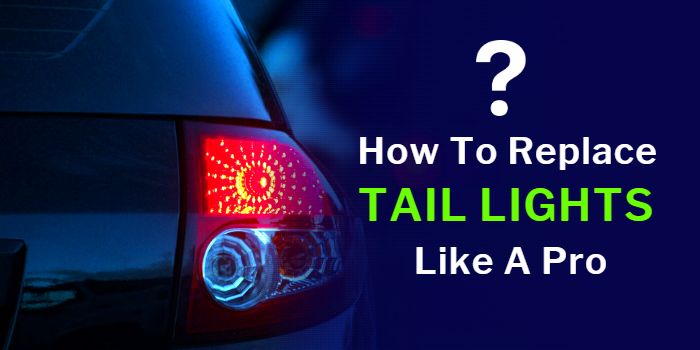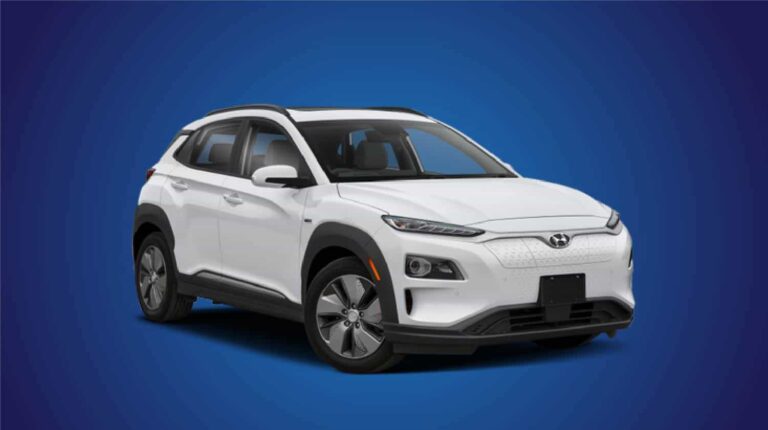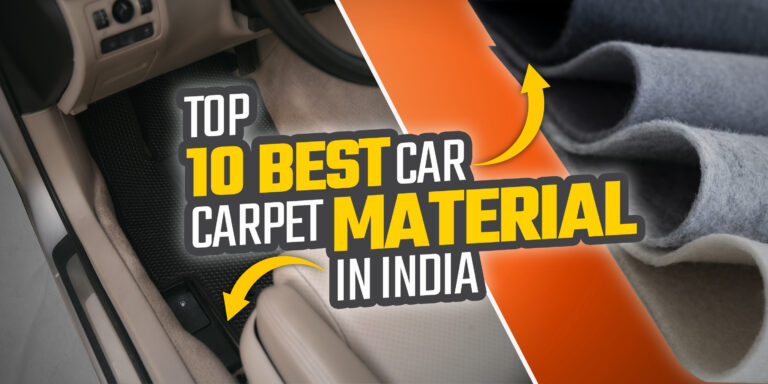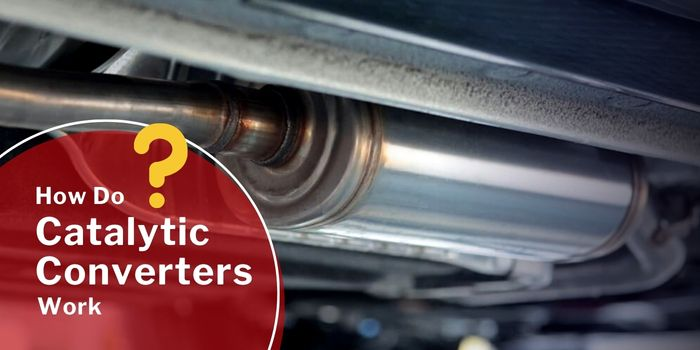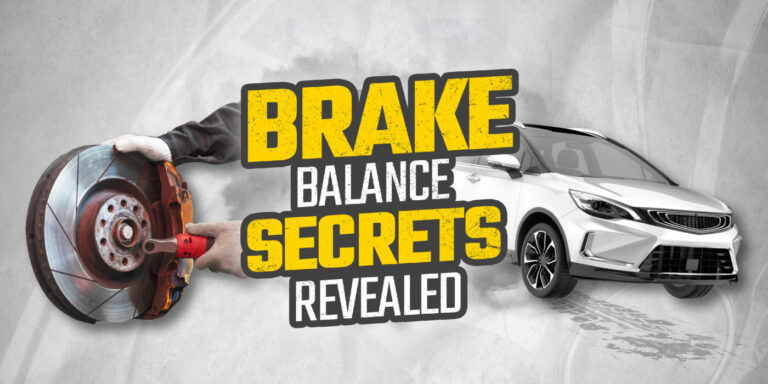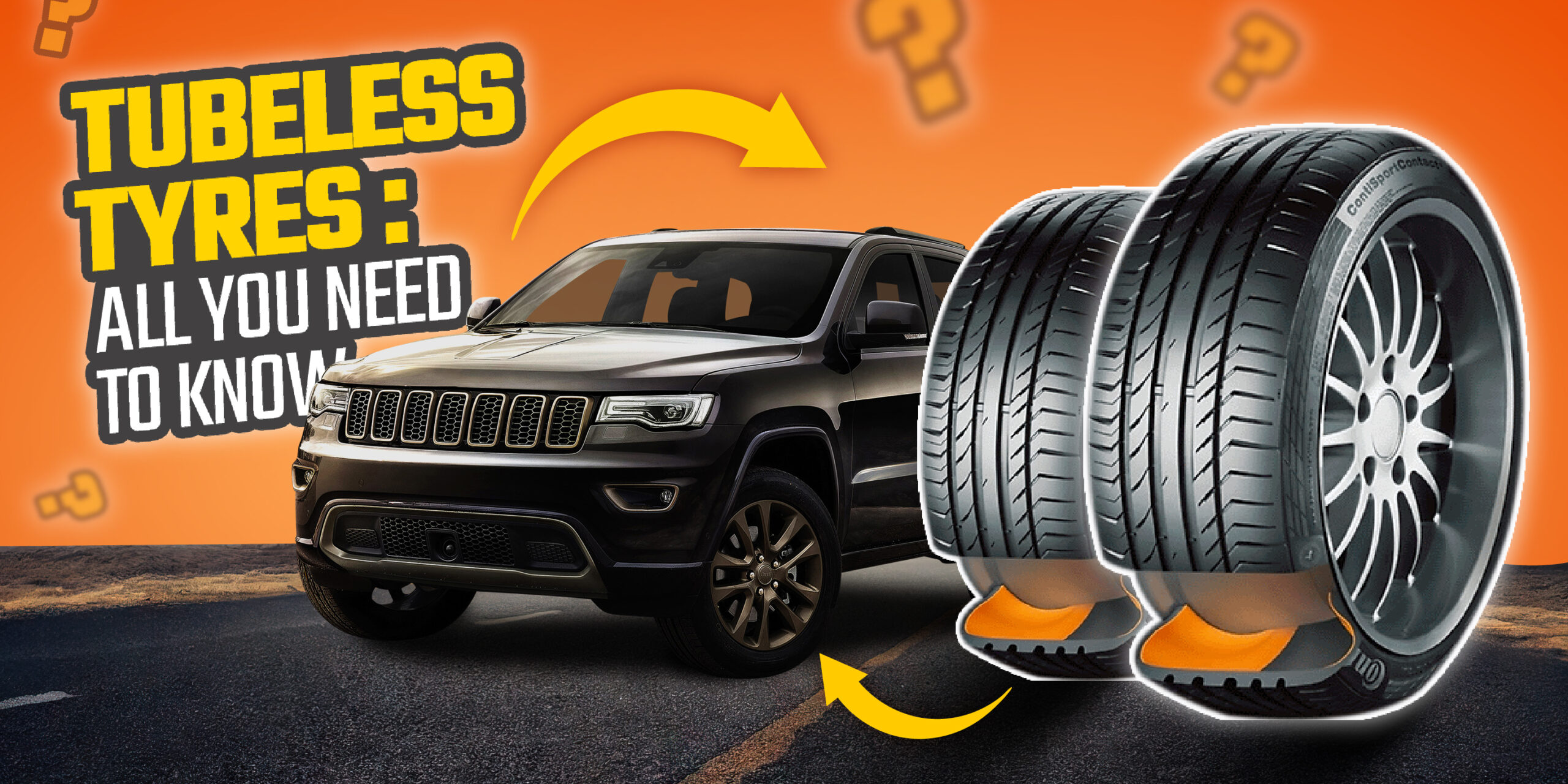
Tubeless tyres have the potential to redefine the driving experience for both car enthusiasts and daily commuters. Unlike tube-type tyres, tubeless tyres create an airtight seal directly with the wheel rim and don’t require an inner tube. Tubeless tyres have several advantages such as enhanced performance, safety and puncture resistance. While some of the downsides include higher initial costs and compatibility with the wheels. Let’s look at if tubeless tyres are the best choice for your vehicle.
What is Tubeless Tyres?
At the heart of tubeless tyre technology lies its innovation in its elimination of the inner tube, which is used in ordinary tyres to maintain air pressure. Tubeless tyres make use of reinforced beading along the rim of the wheel, which is an airtight liner to maintain air pressure within the tyre. The flexible side wall, specially designed tread and valve stem work in conjunction to offer better performance through lightweight construction, optimal traction for enhanced safety and long life through various driving conditions.
Here Checkout How Often To Fill Air In Tyre
Components of Tubeless Tyres
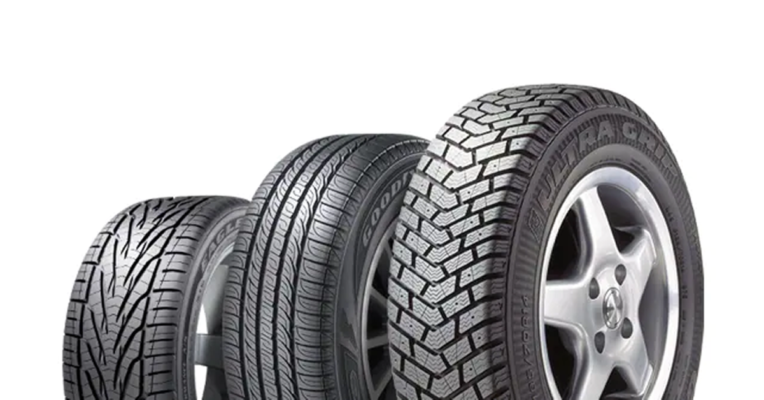
To get a better understanding of how tubeless tyres work, let’s look at the individual components in their construction.
Inner Liner
It is made from a special rubber compound that is flexible and durable. The primary function of the inner lining is to maintain the tyre’s airtight integrity and prevent air from escaping.
Beads
Made from high tensile steel wires coated in brass for extra strength and flexibility. Beads reinforce and secure the tyre around the rim, making an air-tight seal and maintaining the tyre’s shape. This is important to resist deformation while driving.
Sidewalls
Sidewalls constitute the area between the tyre beads and the tyre treads. It’s the vertical visible area of the tyre that contains the branding and tyre information including specifications, type and safety ratings. The tyre’s strength depends on the sidewall and tubeless tyres have sidewalls that contribute to the tyre’s rigidity.
Casing Ply
Multiple layers of strong fabric cord run from one bead across the tread to the other side of the bead, providing the tyre with structural stability. Tyres that have a large number of cross-ply are generally stronger and more flexible than other tyres with less casing ply.
Tread
The part of the tyre that is in contact with the road. It has a grooved pattern for high traction on slippery surfaces, yet it provides smooth and quiet rotation on tarmac and rough roads. The tread is also designed to disperse water for good handling in wet weather. The type of tread influences factors such as grip, amount of wear, fuel economy and driving comfort.
Steel Belts
Run along the radial axis of the tyre in between the inner lining and the tread. They can be made from other materials to enhance the tyre rolling stability, and durability and to contribute to even tyre wear.
Rim Cushion
An additional layer of rubber is placed between the beading and inner lining which acts as a protective barrier. It reduces friction caused while the tyre is rotating and prevents chaffing and damage to the tyre.
Valve Stem
Made from durable metal in a small cylindrical shape that protrudes from the wheel rim. It allows you to inflate the tyre through a valve that controls airflow and maintains the air pressure. Tubeless tyres have the same type and specifications of valves as regular tyres.
Also Read here Tyre Construction: Its Parts and Their Function
Tubeless Tyres Advantages and Disadvantages
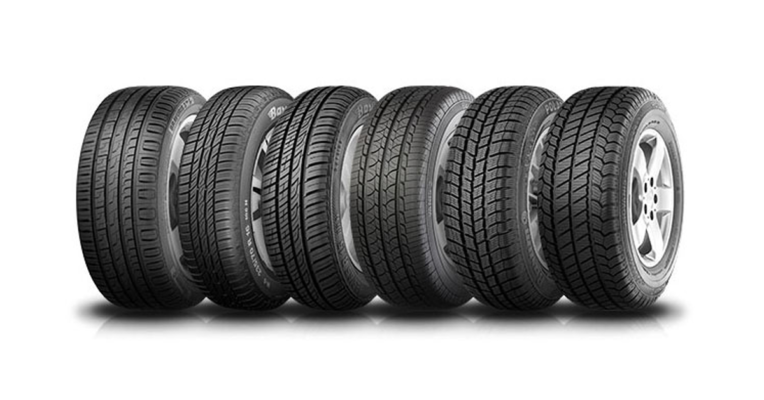
Tubeless tyres offer a range of benefits while presenting their own set of challenges for the daily driver. It’s important to consider the pros and cons of tubeless tyres before installing them on your vehicle.
Tubeless Tyres Advantages
Almost all modern vehicles use tubeless tyres for their high performance and safety. Other benefits make tubeless tyres a preferred choice today due to their safety, efficiency and superior driving experience.
Puncture Resistance
Without an inner tube to be punctured, tubeless tyres boast longer life and are more resilient to sharp objects, road hazards, curb hitting, nails, sharp stones and glass. The chances of getting a flat tyre on the road are greatly reduced for a more relaxed and stress-free drive.
Improved Fuel Efficiency
Tubeless tyres are lighter than tubed tyres because of their construction and absence of an inner tube. This allows the wheels to rotate freely without added weight and less rolling resistance, leading to better fuel economy.
Safety First
Drivers have enhanced safety with tubeless tyres in the event of a sudden loss of air pressure. The air escapes gradually instead of a sudden burst which gives more time to react in an emergency. A tyre burst could result in loss of control, but tubeless tyres help maintain traction in the event of a sudden puncture.
Sealant Compatibility
Sealants can be pumped through the valve stem which will seal punctures instantly and automatically. It’s a self-healing capability that can allow the driver to address small leaks after a journey at a safe spot. It’s a convenient feature with an extra layer of reliability.
Long Lifespan
They have a long life compared to tubed tyres because of stronger construction, reinforced side walls, new and advanced materials and testing for durability. This results in lower maintenance costs for vehicle owners.
Consistent Air Pressure
These tyres can maintain air pressure consistently over time. The air-tight seal between the tyre and the rim ensures that the tyre remains properly inflated.
Better Handling
With less unsprung mass and higher levels of grip, drivers will feel more in control with tubeless tyres. This leads to better performance, grip and stability in adverse driving conditions. These tyres are well suited to high-speed driving and cornering.
Here Checkout Discover The Difference Between Wet And Dry Tyres
Tubeless Tyres Disadvantages
Let’s now look at the trade-offs of tubeless tyres. Understanding the drawbacks allows consumers to make informed purchase decisions based on their limitations.
Initial Cost
Expect to pay more for a tubeless tyre set due to the advanced technology used in their construction and the use of new materials. However, you can get a longer life and spend less on maintenance, so it could work out in your favour in the long run.
Complex Repairs
Fixing a tubed tyre is just a matter of replacing the inner tube which is quite simple. For tubeless tyres, the puncture needs to be sealed with a vulcanization strip or the tyre needs to be filled with a sealant. Larger or more significant damage may require professional assistance or warrant a replacement which as mentioned earlier would be costly. Roadside repairs of tubeless tyres may prove to be a bit challenging.
Compatibility Issues
Not all vehicles can accommodate tubeless tyres. Older models lack the necessary rim configurations and sealing features required for a tubeless tyre setup. It would require a modification or upgrade adding to the overall cost.
Skill Requirement
Mounting a tubeless tyre on the rim requires a professional mechanic with access to special equipment. With the proper tools, you may achieve an air-tight seal for safe driving.
Rim Dependency
If the rim gets damaged, the tyre may not be able to maintain proper inflation which can pose some issues regarding tyre replacement.
Air Loss Issues
Tubeless tyres are susceptible to slow air leaks over time rather than sudden bursts. Although this may be beneficial in an emergency, it requires regular tyre pressure checks. Most cars today have automatic Tyre Pressure Monitoring System to make things easier. Neglecting to address pressure leaks can lead to poor fuel efficiency and uneven tread wear.
Understanding the benefits and drawbacks provides a comprehensive view of tubeless tyres based on your specific needs and priorities.
Checkout Here Difference Between Low Profile Tyres Vs Normal Tyres Vs High Profile Tyres
How Do I Repair a Tubeless Tyre?
Here’s a step-by-step guide to fixing your flat tubeless tyre the easy way.
Tools You’ll Need
- Tyre Repair Kit
- Tyre Pressure Gauge
- Pliers
- Valve Core Tool
- Rubber Cement
- Plug Insertion Tool
Locate the Puncture
Listen for the hissing sound of escaping air or spray soapy solution on the tyre and look for bubbles. A visual inspection should locate the puncture.
Remove the object
Take out any foreign object such as a nail, screw, etc carefully using pliers. Prevent any further damage and take note of the puncture area.
- Deflate The Tyre
- Use a valve core tool to remove all air pressure. This will help with an effective repair.
- Fixing the puncture
- Use the reamer tool to enlarge the puncture hole so that the plug or patch can be secured over it.
Use Rubber Cement
Apply rubber cement around the area of the puncture to create a good seal. It also improves the adhesion of the plug or patch.
Apply the Patch
Insert the plug into the puncture using the appropriate tool. Allow a few minutes for the plug to react with the air and enlarge, sealing the damage.
Reinflate the Tyre
Use a portable tyre inflator to pump air pressure up to specifications. Look for air leaks after reinflating the air using soapy water.
Monitor Tyre Pressure
Take a test drive and keep an eye on the tyre pressure for the next few days to make sure that the repair was successful. If the pressure drops again, reinspect the tyre for other issues.
If you see a bulge in the sidewall, worn-out tread, damaged valve or dented rim, then it is best to replace the tyre and/or wheel as necessary. Follow the manufacturer’s guidelines or consult a professional if you are unsure about the repair process.
Also Checkout The Science of Tyre Regrooving
Conclusion
Tubeless tires have redefined our expectations when it comes to performance, safety, reliability and maintenance. However, considering the cost and complexity of installation is also a deciding factor for the need to make informed choices based on their priorities.
We hope you enjoyed this detailed post on tubeless tyres. Visit the Carorbis Blog for more informative articles on automotive-related topics.
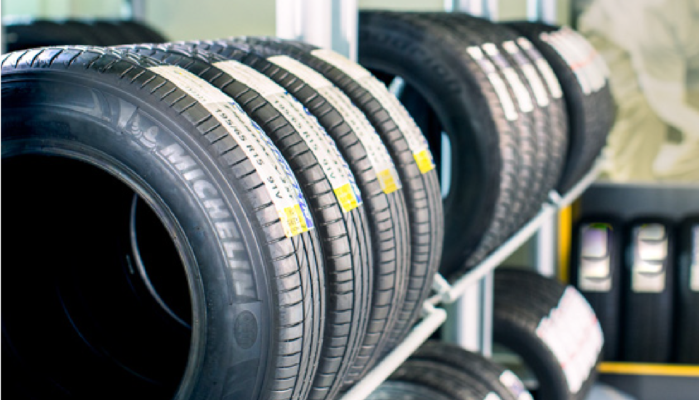
Frequently Asked Questions
Q1. How Tubeless Tyres Work?
Ans. Tubeless tyres do not have an inner tube. The tyre and the rim form an airtight seal with the help of metal beading. The bead keeps air pressure within the tyre and can offer better performance, less chance of punctures and enhanced safety while driving.
Q2. Can Tubeless Tyres Be Used With Tubes?
Ans. Tubeless tyres are designed to be used without tubes. It’s not possible to install a tube in a tubeless tyre because there should be provision for the air pressure valve. Using a tube in a tubeless tyre may compromise performance and safety, therefore it is not recommended to modify the tyres.
Q3. Can Tubeless Tyres Get Punctured?
Ans. Tubeless tyres are susceptible to punctures just like any other type of tyre. A sharp object such as a nail or a jagged piece of debris can tear a hole in the tyre and cause air pressure loss. There are tyre sealants that are filled into tubeless tyres that have a self-healing property. The sealant fills up gaps and prevents air leakage.
Q4. Can Tubeless Tyres Be Repaired?
Ans. Tubeless tyres can be repaired with a tyre repair kit consisting of a vulcanization strip that plugs the air leak. It can be done by yourself in an emergency. There is also an emergency tyre repair sealant that requires no tools. It forces the sealant into the tyre and refills the tyre pressure to fix a puncture.
Q5. When To Change Tubeless Tyres?
Ans. Check on the tyre tread to get an idea if the tyres are worn out. If the tread shows significant wear, bald spots or visible damage such as bulging, then it’s time to change your tyres. Regular inspections and timely replacements are the best way to ensure safety and good performance.
Q6. Which Tubeless Tyre Is Best?
Ans. All modern tyre manufacturers produce high-quality tyres tubeless tyres for a wide variety of cars, SUVs and luxury vehicles. Some notable brands of tubeless tyres include Michelin, Pirelli, Bridgestone, Dunlop, Yokohama, Goodyear, MRF, Apollo, CEAT, JK Tyre and TVS. In terms of sales, MRF Tyres is the highest-selling brand in India.
